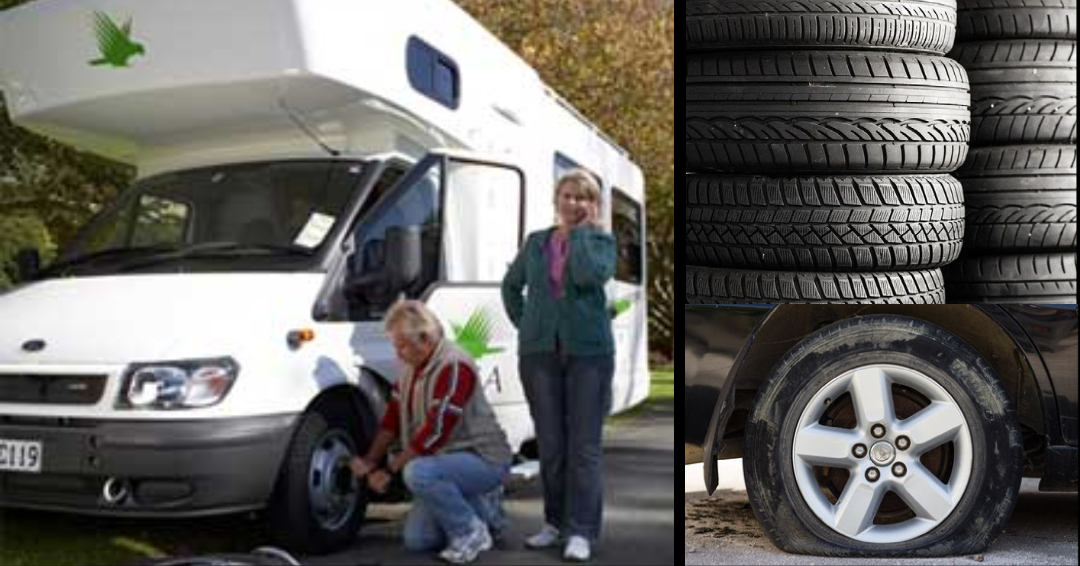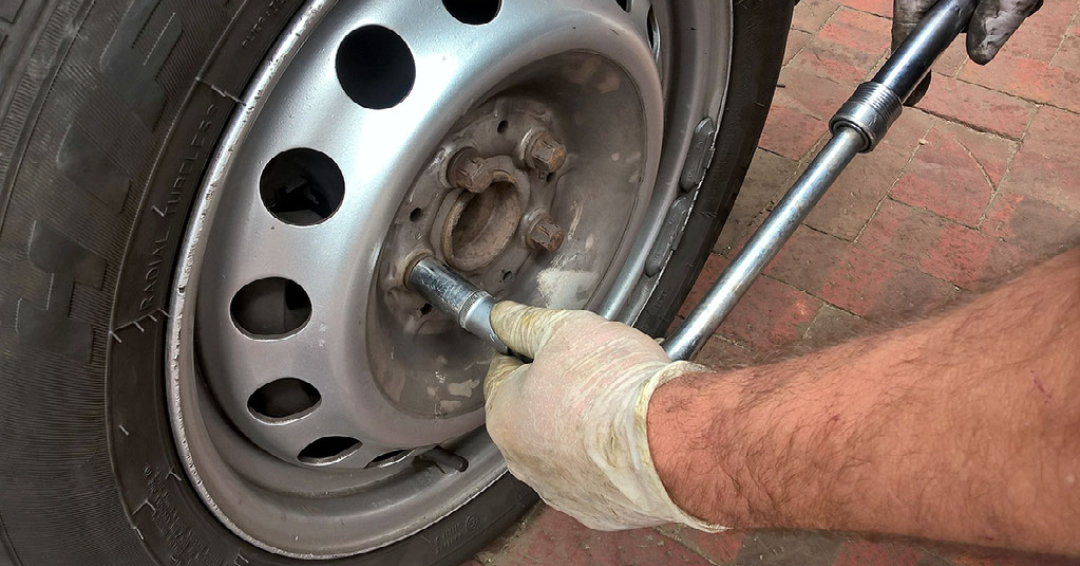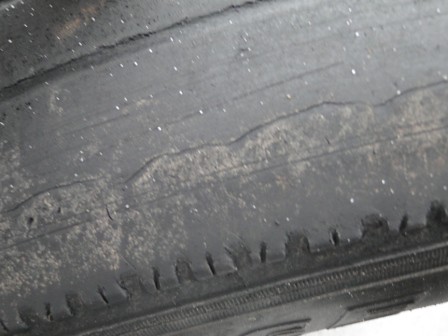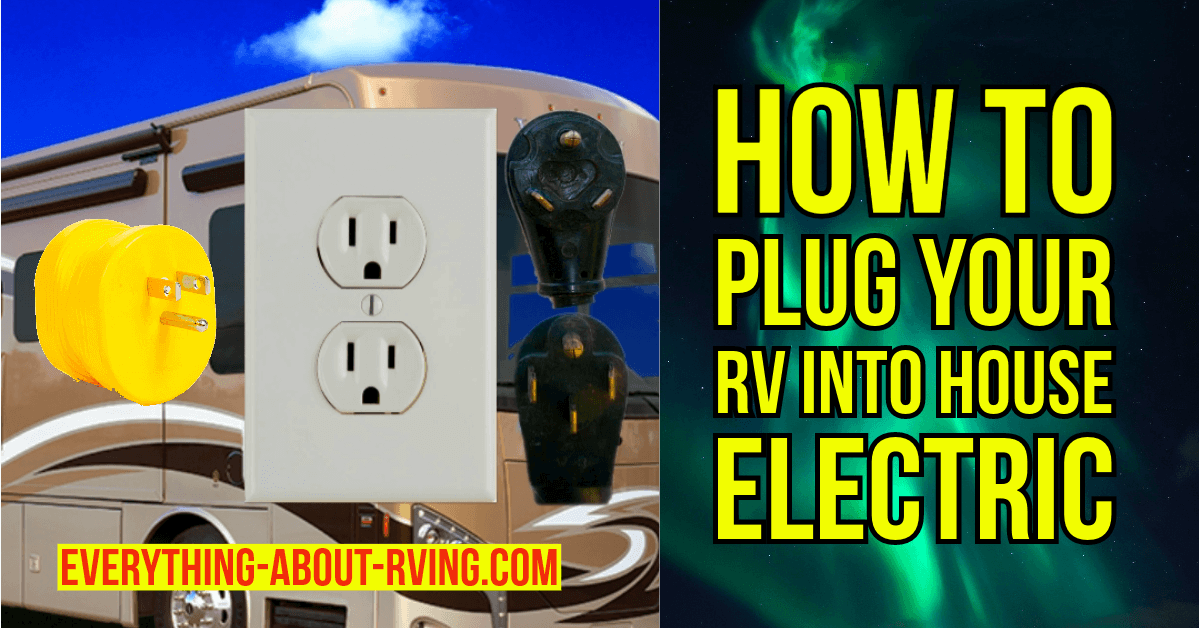- Home Page
- RVing Tips & Tricks
- Best Rv Tires
How To Choose The Best RV Tires
(With Maintenance Tips)
By Mark Johnson
Choosing the best RV tires for your RV isn't as easy as just going to a tire store
Choosing the best RV tires for your RV isn't as straightforward as going to the tire store and getting them. This begs the question. How do you choose the best RV tires for your RV?
You should consider so many factors, from load capacity to tire size, when looking for the best RV tires. But don't worry, we've got you covered.
This article answers the above question and goes through everything you need to know about RV tires. Now with the introduction out of the way, let's dive right in.
I. How Do You Know When You Need New RV Tires?
Knowing when to change your tire for a set of new RV tires is vital as it saves you a lot of trouble. Below are a few signs that scream, you need new RV tires.
● Flat tires
Tires don't just go flat on their own unless there is an underlying problem. If your tires suddenly begin to flatten while in storage and you can't seem to pump it up again, it's time for new RV tires.
● Sidewall crack
Noticing cracks or cuts on your RV tires’ sidewall indicates that the tires need to be replaced. It's safe to assume that if one tire has cracks on its sidewall, the others probably do.
● Tire age verification
Like all vehicles, you can get a minimally used RV. However, just because the RV looks new, it doesn't mean its tires are. That being said, you can verify just how old your RV tire is by the four-digit DOT number on the sidewall of your tire. This DOT number begins with the letters DOT and is accompanied by a three or four-digit number.
To know what year the tire was made, you check the last two digits. The first two digits signify what week it was made. This means that if you have a tire age reading of "1916," your tire was made on the 19th week of 2016.
● Treadwear
With constant use, the tread of your RV tires will begin to wear out. You are advised to do a treadwear check every 90 days to ensure you have enough tread to be driving safely. If you find that your tread is worn out, it's time for new RV tires.
II. How Often Should You Replace Your RV Tires?
Whether you notice sidewall cracks, treadwear, or not, it is advised that you replace your RV tires between three to six years of use. Also, if you think your RV tires need to be replaced, trust your instincts and replace them as you can't be too careful. While some RV tires might go bad before others, replacement is a matter of necessity. This means that you should monitor your tires for signs that you need a replacement and do the needful.
III. What Are the Different Types Of RV Tires?
There are several types of RV tires; Below, we've provided you with an overview of the various RV tire types.
● Special Trailer (ST) Tires
The ST tires are specially designed to carry the weight of a travel trailer. With an extra durable sidewall stronger than other tires, ST tires are the ultimate trailer tires.
● Light Truck (LT) Tires
Light truck tires are designed for class A, B, and C rigs. The weight of these tire classes may affect the cost. Keep in mind that larger recreational vehicles will require beefier tires.
● Radial Tires
Radial tires are made up of steel belts running a 90-degree angle in the direction your car is moving. It is also called a radial-ply tire. The steel belts reinforce your tire sidewall giving it a bulging look. Radial tires are known to economize fuel.
● Bias Tires
With a lower price tag attached, bias tires feature a belt construction consisting of nylon belts running at a 35-40 degree angle. Thanks to this belt construction, bias tires have a strong sidewall enabling them to handle significant weights compared to radial tires. Keep in mind that bias tires are also called bias-ply tires.
IV. How To Choose The Best RV Tires
Now to the single most crucial question, how do you choose the best RV tires? Read on to find out.
● Tire Size
Depending on the wheel diameter used by the vehicle manufacturers, RV tires come in various sizes. Getting the proper RV tire size is crucial as the tire size requirement for a trailer will vary from that of a motorhome.
To get the proper tire size, you should check the manufacturer's specifications for the vehicle and get the recommended tire size written on the manufacturer's manual.
● Tire Sidewall Strength
The strength of your tire's sidewall will determine its resistance to punctures and cuts on the side of the tire. The stronger your tire's sidewall, the more it wouldn't flex, not even at lower pressures.
What determines your tire's sidewall strength is the number of plies running through the sidewall, tread pattern, and tread design. Knowing the sidewall strength of your RV tire is essential as various RV manufacturers recommend different air pressure for the tires.
● Weight Rating
Overloading your RV is never a good idea as it damages the tires in the long run. These tires come in various shapes and sizes, implying that each will have a different weight rating.
Here's a simple rule to follow to get an RV tire with a good weight rating. An RV tire's cumulative maximum load capacity should be equal to or exceed the maximum load rating found in the RV's manual. With this, getting an RV tire with a perfect weight rating would be a walk in the park.
● Load Rating
The load rating of an RV tire refers to the toughness of the tire and its maximum air pressure allowed. Your tires’ road rating is also referred to as its load range. In order to get the tire with the best load rating (load range), you are advised to check your RV's manual to see the load rating for your RV. After this, you check your tire's sidewall for the letter that indicates the load range. If they match, you are good to go.
● Terrain
The terrain you will be driving on is another important factor that you should consider when buying an RV tire. If you drive on rocky or uneven terrain, you will want an RV tire with a robust tread pattern that enables proper grip. If you drive on ice or in the snow, you will need an RV tire with additional siping (slits in the tire tread).
V. How To Maintain RV Tires
Your ability to maintain your RV tires will affect their lifespan. Below are a few relevant tips on how to maintain your RV tires.
● Always check your RV's tire pressure before hitting the road (it should be above 25 lb).
● Constantly inspect your tire treads for wear.
● Keep an eye out for sidewall cracks.
● If you drive on wet or icy roads, getting a set of M+S tires would not be a bad idea.
● Rotate your tires every six months; this helps prevent uneven tire wear.
● Store your tires in a dark and dry environment as moisture or direct sunlight can damage your tires over time.
● Regularly take your RV to an expert for servicing.
VI. Conclusion
If you are reading this section, you now know how to get the best RV tires for your vehicle. With the maintenance tips and information provided in this article, you don't need to be an expert to know when to change your RV tires or which type fits your vehicle perfectly.
About The Author
Mark Johnson is a tire technician. He has been working with tires for 8 years. Now, he’s the Founder and Chief Editor of tiresglobe.com - a blog about Tires & Wheels. He has been writing articles to share his experience related to tires & wheels with honest and accurate information.






